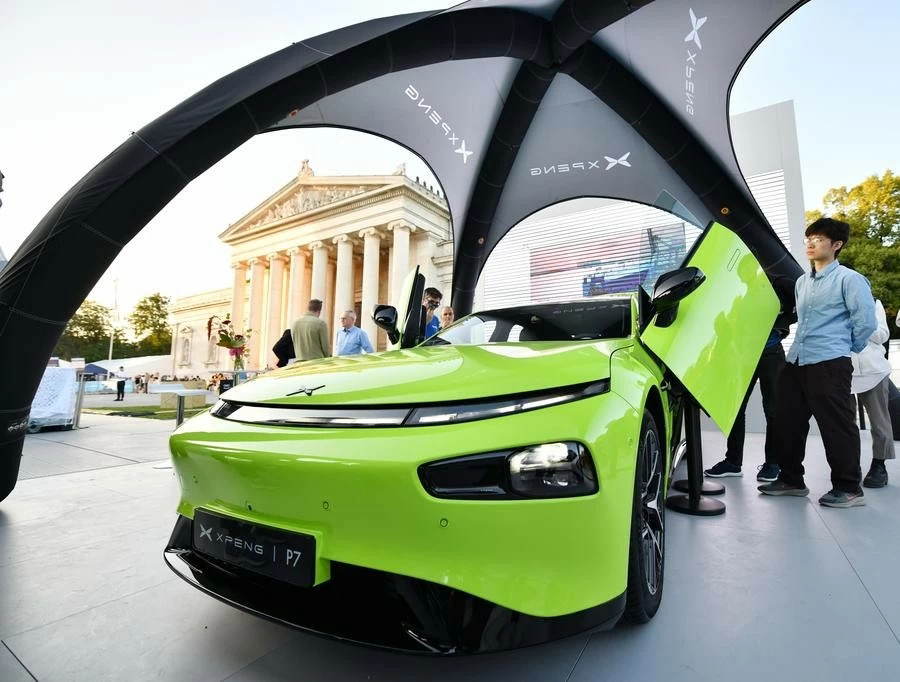Syria’s automotive sector is showing strong signs of revival as waves of imported vehicles—both electric and conventional—flood local markets. After years of economic hardship and infrastructure collapse due to prolonged conflict, the arrival of these vehicles marks a turning point in Syria’s path toward economic normalization and environmental modernization.
In early 2025, video footage surfaced showing convoys of electric cars crossing into Syria from the Jordanian border, reportedly imported by private Syrian investment firms. Not long after, ships carrying South Korean vehicles docked at Tartus Port, further signaling the resurgence of automotive trade in the country.
This influx coincides with a proactive policy shift from the Syrian government. Decree No. 240 of 2024 has significantly reduced customs duties on electric vehicles (EVs), slashing tariffs to 10% for locally assembled EVs and 20% for imported ones. By contrast, fuel-powered cars still face customs duties ranging from 40% to 200% depending on engine size. The move aligns with Syria’s broader goal of encouraging green transportation and reducing environmental impact.
Economic and transport experts see this as more than just a regulatory change—it’s a foundation for long-term market growth. Amer Deeb, a transportation analyst, forecasts a major surge in demand for electric cars over the next year due to a combination of government incentives and pent-up demand in a market long deprived of private mobility.
Prices of both electric and traditional cars have plummeted, making them more accessible to average consumers. For example, a 2011 Hyundai Sonata that once cost over 700 million Syrian pounds (around $40,000) can now be bought for $10,000. Other models like the Kia Rio have seen similar reductions. Dealers now report a wider range of options for consumers, even as 80% of imported vehicles are still used models.
According to Damascus-based car dealer Ammar al-Masri, older Korean and Chinese cars are now priced between $1,500 and $6,000, while newer imports start at $8,000. He adds that despite the drop in prices, not all Syrians can afford a vehicle, but the new affordability has significantly widened the market base.
Crucially, Syria’s foreign policy realignment has also influenced its trade dynamics. No longer solely dependent on traditional allies like Iran and Russia, Syria’s transitional government has deepened economic ties with countries like Turkey and Qatar. This pivot has opened the door for diversified trade and foreign investment, including in the automotive and clean energy sectors.
Although challenges remain—particularly in terms of infrastructure and fuel availability—the policy shift represents a broader vision for national recovery. Electric vehicles, with lower operating and maintenance costs, offer a practical alternative for a country facing chronic energy constraints.
The government’s push for green transport is also in step with global sustainability goals. By fostering a market for electric cars, Syria positions itself as a forward-looking nation ready to invest in renewable technology, job creation, and climate-conscious growth.
Economist Mohammed al-Salloum estimates that Syria has imported $1.5 billion worth of vehicles in recent months, reflecting strong market demand. He argues that, if managed well, this momentum could be the catalyst for local industry development, including electric vehicle assembly, parts manufacturing, and maintenance services.
Al-Salloum also urges policymakers to channel part of this energy toward creating industrial zones and supporting agricultural and manufacturing supply chains. Such moves, he says, would strengthen the domestic economy, improve self-sufficiency, and reduce reliance on imported consumer goods.
The car boom is already creating ripples across other sectors, from finance to logistics. As more cars hit Syrian roads, there is a growing need for expanded service networks, fueling stations, and, in the case of EVs, charging infrastructure—offering new business opportunities and employment prospects.
While some worry about the sudden influx of imports impacting the local currency and inflation, analysts believe that the benefits of a revitalized consumer market outweigh short-term pressures. The key, they say, lies in smart regulation and a balanced approach to market expansion.
Syria’s current trajectory reflects a government intent on rebuilding not only roads and ports but also public trust in economic opportunity. The automotive sector, especially the electric vehicle segment, is becoming a symbol of hope and resilience for many citizens.
For a country that once struggled to import basic goods, the sight of brand-new and refurbished vehicles on the streets of Damascus, Aleppo, and Homs is powerful. It tells a new story—of recovery, modernization, and the promise of a cleaner, more mobile future.
As electric cars glide quietly through Syrian cities, they do more than reduce emissions—they carry with them the aspirations of a nation eager to reconnect with the world and drive itself forward, one charge at a time.


